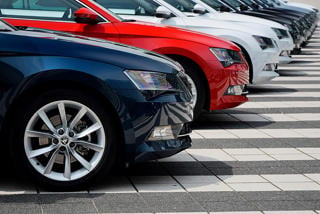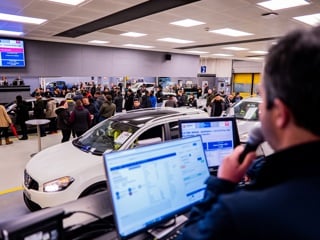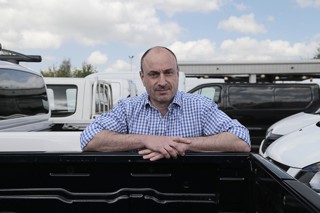The process of remarketing ex-fleet vehicles is changing. Online auctions and a host of new technologies is making it slicker and helping fleets and leasing companies to improve residual values.
Whether you outright purchase or contract hire vehicles, you need to be aware of the changes in order to benefit from higher re-sell values or more competitive leasing rates.
Online auctions, which enable more buyers to participate in more auctions, are pushing up prices.
Last year, 130,000 of BCA’s 600,000 sales (22%) were made to buyers bidding online. In America, where the service has been available for longer, online sales account for 30-35% of remarketing volume. BCA commercial director D’Vidis Jacobs predicts the UK will follow that example.
“In quarter one 2007 we sold 2,416 cars online; in quarter one this year we sold 32,772,” he said. “Online is making physical auctions more efficient. It increases buying power because the buyer doesn’t have to go to the site. In the long-term, the market will go more online.”
However, online auctions will not make physical remarketing centres obsolete. They are necessary for de-fleeting vehicles; at any one time, BCA stocks between 12,000 and 15,000 vehicles at each of its 20 UK centres.
“We have nothing in our plans to reduce our footprint; the cost of logistics is the biggest one for vendors so we need a regional network,” said Jacobs.
BCA offers four online remarketing options for sellers, each of which is now available on mobile phones:
• Live Online, the most popular option, is where cars for sale in a physical auction are also available online in a live bidding process. Last year, 106,000 cars were sold this way.
• Bid Now is an eBay-style process where all the vehicles in a batch are offered for sale online at the same time.
• Buy Now offers cars online at a fixed price.
• E-auction is for cars that are available only online, using the Live Online technology.
BCA launched its Assured programme last year, a mechanical report which checks items such as engine running, interior, tyre tread, brakes and oil levels.
It costs the seller £10 per car (the buyer also pays a surcharge) and has already resulted in a 0.5-1% increase in bids and conversion levels and around a 0.5% rise in residual value. On a £20,000 car, an up-lift from 35% to 35.5% would equate to an additional £100 for the seller.
For a 100-vehicle fleet, this equates to £10,000 for a cost of £1,000. The benefit on vans, which include additional checks, is likely to be even greater.
Other recent developments include fleets and leasing companies setting reserve prices online rather than at the auction centre which helps them (and BCA) to manage the problem vehicles – for example, those requiring smart repair – much earlier in the process.
BCA is targeting three areas for growth in the UK. The first is offering more vehicles for sell, particularly targeting smaller vendors. Around 6.5 million cars are sold each year with around 25% going to auction. Of those 1.6m, BCA handles almost 40%.
“We want to see this grow which means going direct to the fleet,” said Jacobs. “That used to be expensive, but now it’s cheaper with the new technology.”
He is also looking to grow by encouraging existing customers to take on more services. Finally, BCA will continue to develop new services, many of which will come as a result of feedback from customers.
“Vans are a focus area. We have new video technology for appraisals rather than describing the damage,” said Jacobs. “Our online tools work well for end user fleets which sell a few vans at a time.”
Poor condition vehicles are another growth opportunity. “The leasing company view is that anyone can sell my good vehicles; they need someone that can sell the more difficult ones, too,” said Jacobs. “This might include the export market in the case of vans and our systems can handle this.”





















Login to comment
Comments
No comments have been made yet.